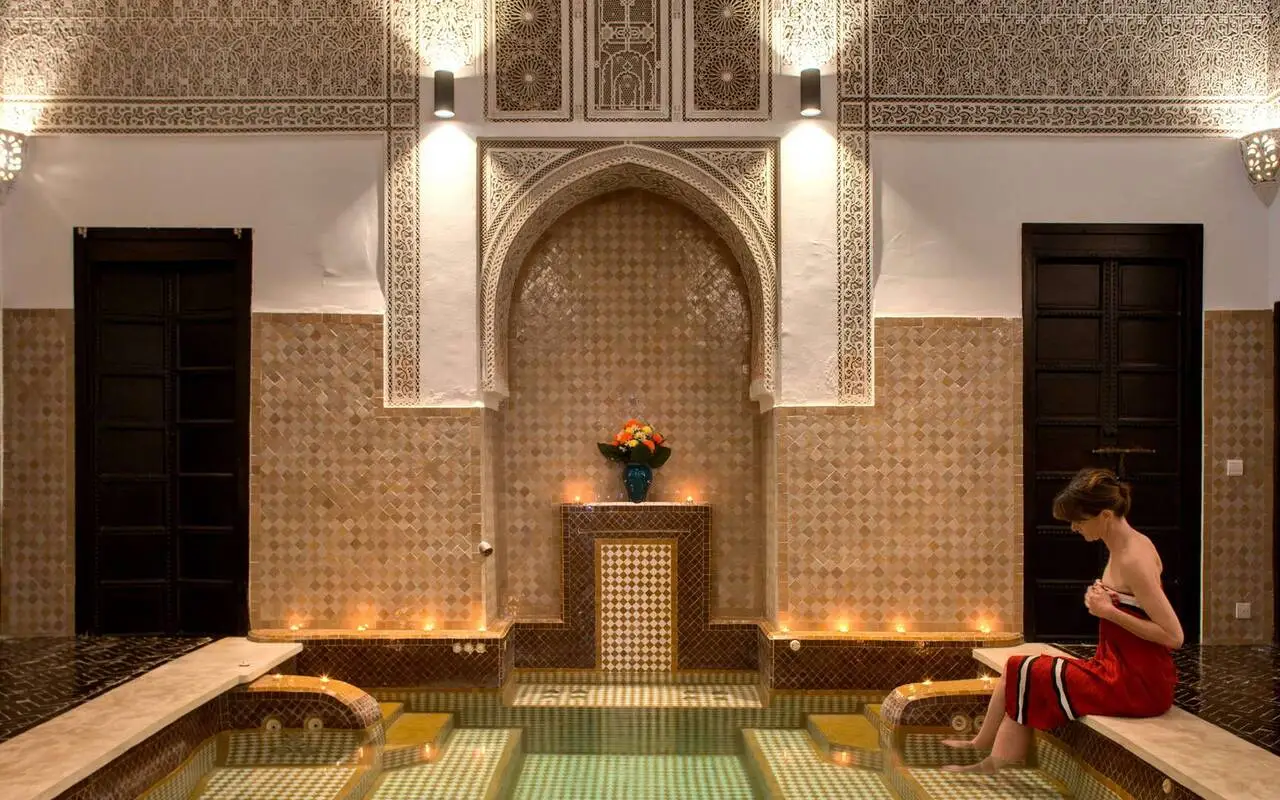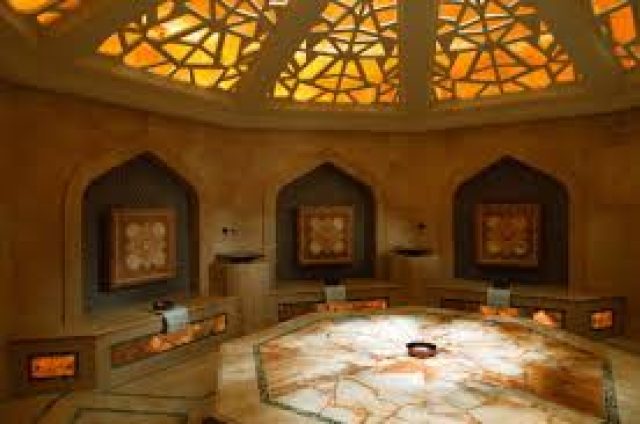Introduction: Discover the Magic of Moroccan Hammams: Your Ultimate Guide
Looking to indulge in authentic Moroccan relaxation? A traditional Moroccan hammam offers a unique wellness and cleansing experience that combines centuries-old rituals with deep cultural significance. You’re in the right place. This guide will walk you through everything you need to know about Moroccan hammam rituals, from their historical origins to modern-day tips for your first visit. Whether you’re planning a trip to Morocco or searching for the best Moroccan hammam near you, this article will help you uncover the secrets of this centuries-old tradition.
Keep reading to explore the benefits of Moroccan hammams, understand the etiquette, and find answers to common questions in our Moroccan hammam FAQ section.
What is a Traditional Moroccan Hammam? Understanding the Moroccan Bath Ritual
A Moroccan hammam is a public steam bathhouse deeply rooted in the cultural and religious practices of Morocco. Traditionally, it serves as both a cleansing ritual and a social experience. Similar to Turkish baths or Roman thermae, the Moroccan hammam is typically composed of several interconnected rooms with varying levels of heat and humidity.
Historically, hammams were linked to mosques and used for purification before prayer. Over time, they evolved into an essential part of community life, where people—especially women—gathered to cleanse, relax, and socialize.
Step-by-Step Experience: What to Expect in a Moroccan Hammam Bath
If it’s your first time, the traditional Moroccan hammam experience may seem a bit unfamiliar. But don’t worry, the process is simple and incredibly rejuvenating. Here’s what to expect:
1. Essential Preparation for Your Moroccan Hammam Visit
-
Bring essentials: flip-flops, a bathing suit or underwear, towels, a scrubbing mitt (kessa), black soap (savon noir), ghassoul clay, and shampoo.
-
Drink water beforehand; it’s going to get steamy!
2. Entering the Moroccan Hammam: Warm, Hot, and Very Hot Rooms
-
Most hammams have three rooms: warm, hot, and very hot. You start in the warm room to acclimate your body.
-
The heat helps open your pores, preparing your skin for deep cleansing.
3. The Role of Black Soap (Savon Noir) in the Moroccan Bath Ritual
-
Black soap made from olives is massaged onto your skin. This natural exfoliant softens the skin and removes toxins.
4. Scrubbing with the Kessa Mitt for Exfoliation
-
After letting the soap sit, an attendant (or yourself) uses the kessa mitt to scrub off layers of dead skin.
-
It may feel intense, but the result is silky smooth skin.
5.Detoxifying Your Skin with Ghassoul Clay Mask
-
After exfoliation, rinse off thoroughly.
-
Next, a ghassoul clay mask is applied. Rich in minerals, it detoxifies and nourishes the skin.
6. Final Rinse and Hair Treatment in the Moroccan Hammam
-
Shampoo your hair and rinse your whole body with warm or cool water.
-
Some hammams offer a head massage or essential oil treatment to end the session.
Health Benefits of Moroccan Hammams: Skin, Body, and Mind Rejuvenation
Traditional Moroccan hammams are not just about cleanliness—they provide a wide range of physical, mental, and emotional health benefits:
-
Deep skin exfoliation: Removes impurities and dead skin, helping with acne and blemishes.
-
Detoxification: Sweating in steam rooms flushes out toxins from the body.
-
Improved circulation: The heat stimulates blood flow and relaxes muscles.
-
Stress relief: The tranquil environment eases anxiety and tension.
-
Better sleep: After a hammam session, most people feel so relaxed they sleep like a baby.
Moroccan Hammam Etiquette: Do’s and Don’ts of the Hammam Ritual
Understanding proper hammam etiquette helps ensure a comfortable experience for everyone:
✅ Do:
-
Bring your own supplies (unless provided).
-
Respect the privacy of others—minimal talking and no photos.
-
Tip your attendant if services are offered.
-
Go with friends or family—it’s a communal event!
❌ Don’t:
-
Wear heavy makeup or jewelry.
-
Use loud voices.
-
Overstay in very hot rooms if you’re not used to steam.
-
Forget to drink water afterward to rehydrate.
Different Types of Moroccan Hammams: Public vs. Luxury Bathhouses
There are generally two types of hammams you can try in Morocco:
1. Traditional Public Hammams: Authentic and Affordable Moroccan Bathhouses
-
Affordable and authentic.
-
Usually gender-separated and attended mostly by locals.
-
Bring your own products or buy them at the entrance.
2. Luxury Hammams (Riads or Spas): Pampered Wellness Experiences
-
Catered toward tourists with professional services.
-
Offer packages with massages, aromatherapy, and private rooms.
-
More expensive, but incredibly relaxing.
Moroccan Hammam FAQ: Common Questions About the Traditional Bath Experience
Q: Is it safe for first-timers to visit a Moroccan hammam?
A: Absolutely! Just follow the etiquette and consider starting with a spa-style hammam if you prefer more privacy.
Q: What is black soap and why is it used?
A: Moroccan black soap (savon noir) is a natural exfoliant made from olives. It softens the skin and prepares it for deep cleansing.
Q: Do men and women bathe together?
A: No, traditional hammams are gender-separated. They have different hours or sections for men and women.
Q: Can I go to a hammam during pregnancy?
A: It’s best to consult with your doctor first. High heat and steam may not be recommended for all pregnancies.
Q: How often should I visit a hammam?
A: Once a week is traditional, but even once a month can bring great benefits.
Q: What should I wear inside the hammam?
A: Most people wear underwear or a swimsuit. Some traditional hammams may allow nudity, but check beforehand.
Conclusion: Embrace the Hammam Culture
Whether you’re traveling through the winding streets of Marrakech or discovering Moroccan wellness in your hometown, the traditional Moroccan hammam is an experience not to be missed. It’s not just a bath—it’s a ritual of rejuvenation, a journey into history, and a true act of self-care.
From the invigorating steam to the exfoliating black soap and mineral-rich ghassoul, each element of the hammam connects you with Morocco’s rich cultural heritage and leaves you feeling brand new.




0 Comment